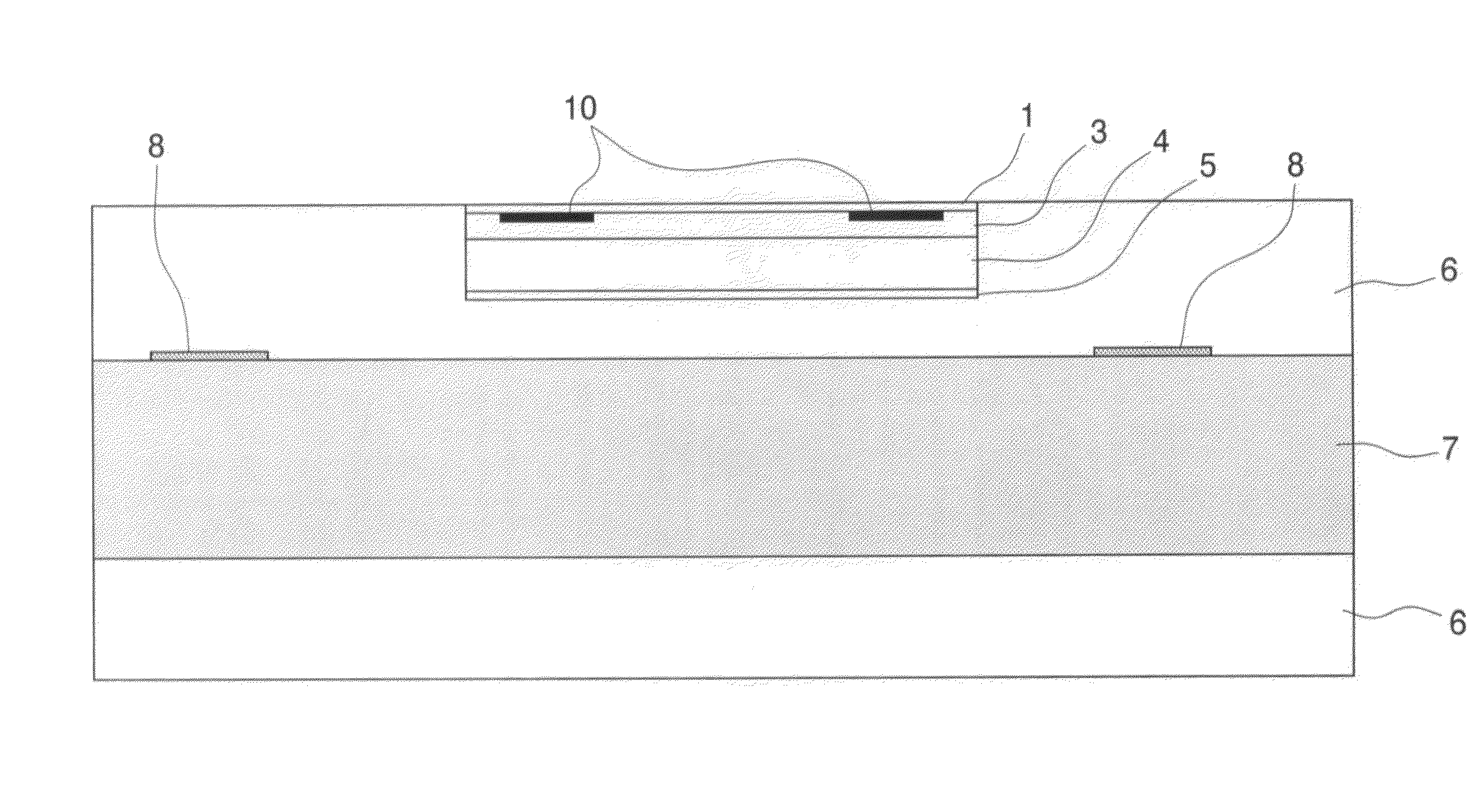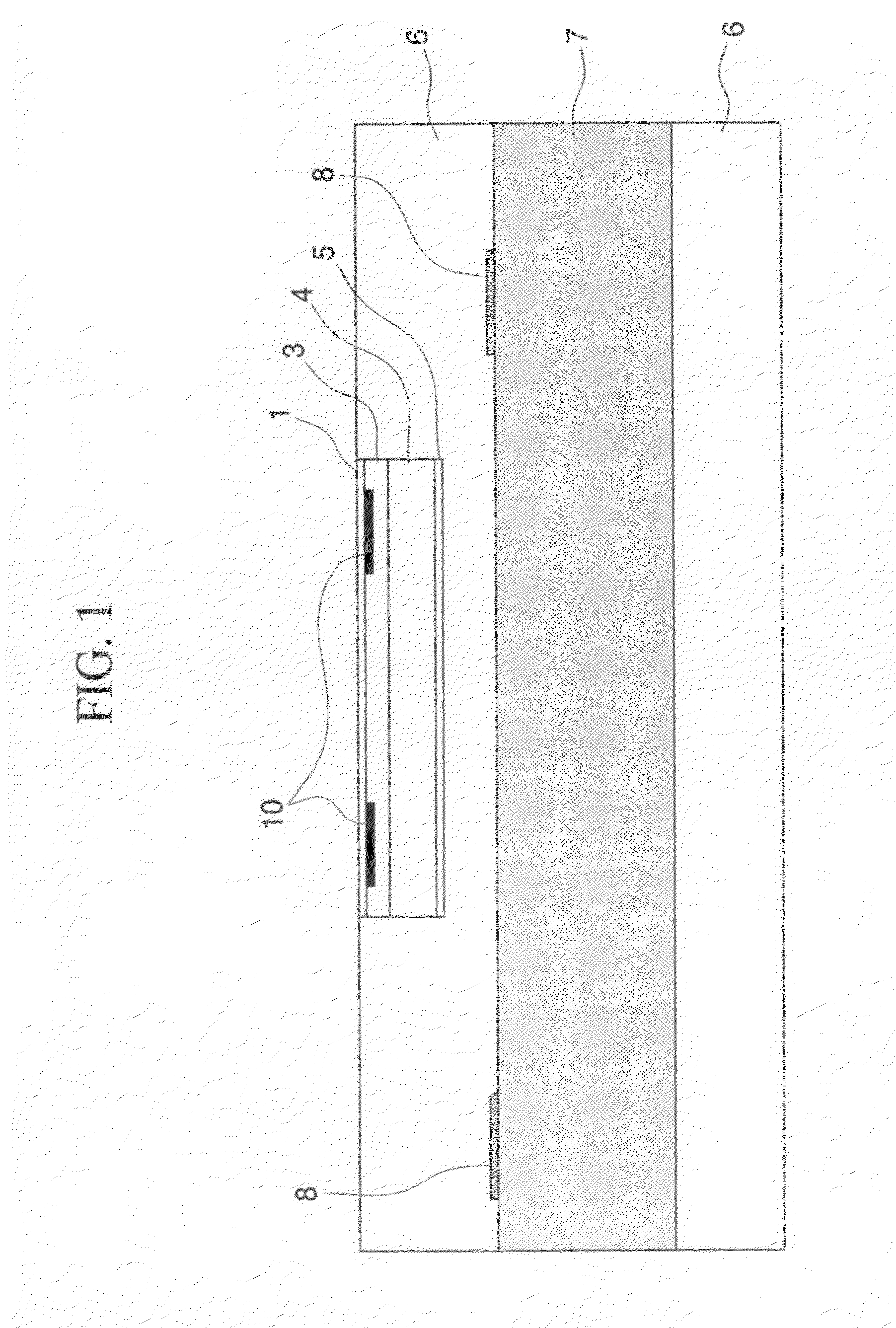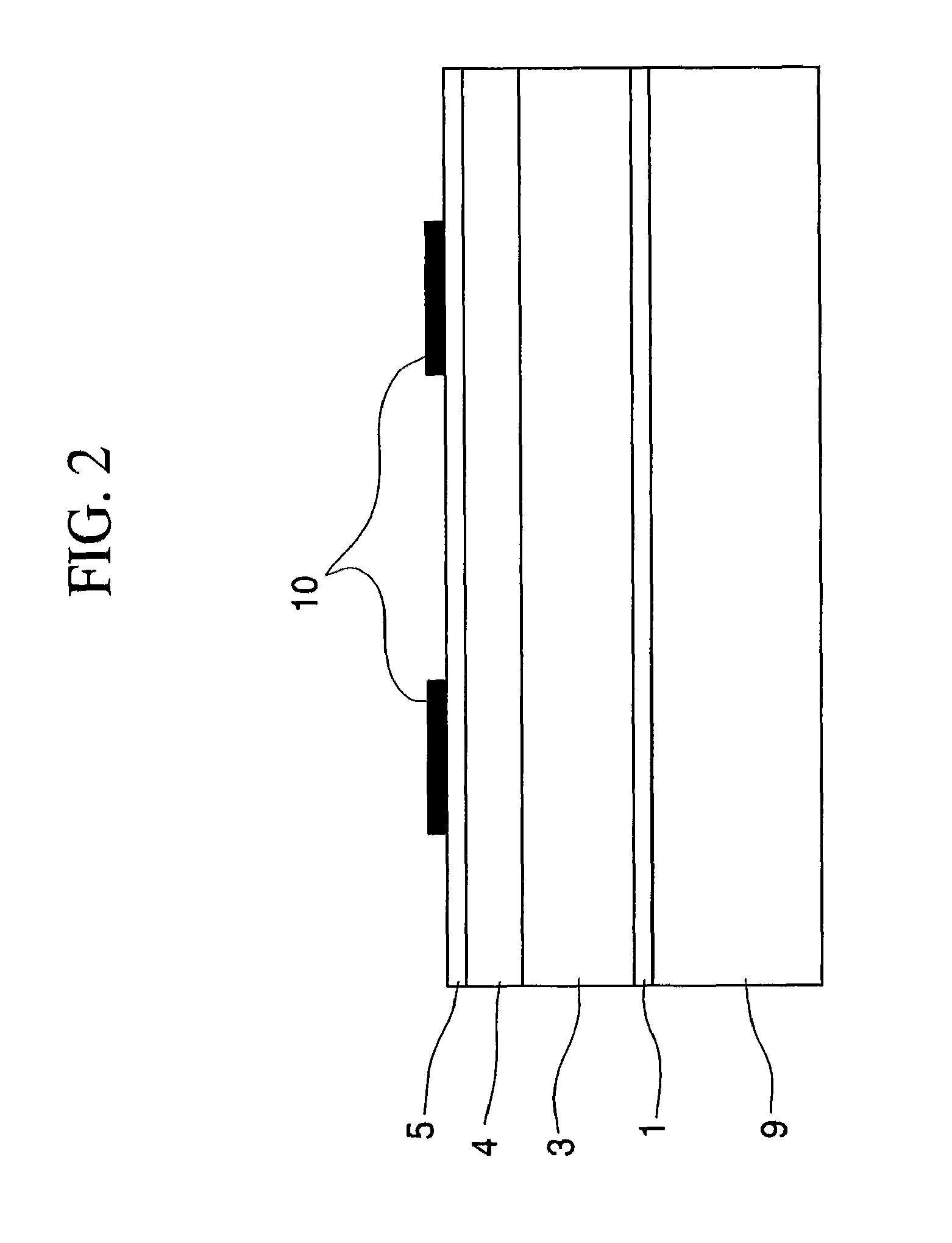Magnetic recording medium and production method thereof
a technology of magnetic recording medium and production method, which is applied in the field of magnetic recording medium, can solve the problems of reducing production efficiency, not being perfect, and increasing the chance of possible information reading error, and achieves excellent stability, weather resistance, and durability.
- Summary
- Abstract
- Description
- Claims
- Application Information
AI Technical Summary
Benefits of technology
Problems solved by technology
Method used
Image
Examples
examples
[0124]The present invention is described in more detail hereafter using examples and comparative examples. However, the present invention is not limited to these examples. The term “parts” means “parts by mass” hereafter.
[0125]Examples using chromatic dyes or fluorescent dyes as the coloring agent in the pattern-forming agent are described hereafter.
[0126]The following temporal carrier base film and paints are used in the examples and comparative examples.
A. Temporal Carrier Base Film: Polyethylene Terephthalate Film Having a Thickness of 24 μm;
B. Preparation of the Paint for the Pattern-Forming Agent Anti-Diffusion Layer (Also Serving as a Protective Layer)
[0127]
cellulose acetate resin 8 parts(“L-20” produced by Daicel Chemical Industries; Tg: 187° C.)cellulose acetate propionate resin 2 parts(“CAP-504-0.2” produced by Eastman Chemical; Tg: 159° C.)acetone25 partsethyl acetate25 partstoluene20 partscyclohexanone20 partspolyisocyanate 4 parts(“Hardener No. 50 (active ingredients: 50...
example 1
[0150]A polyethylene terephthalate film having a thickness of 24 μm was used as the temporal carrier base. The above described paints for a pattern-forming agent anti-diffusion layer, colored layer, magnetic recording layer, and heat-sensitive adhesive layer were applied and dried on one surface of the film in this order using a reverse coater to form a pattern-forming agent anti-diffusion layer, colored layer, magnetic recording layer, and heat-sensitive adhesive layer, respectively. The pattern-forming agent anti-diffusion layer had a dry thickness of 1 μm; the colored layer, 4 μm; the magnetic recording layer, 9 μm; and the heat-sensitive adhesive layer, 1.5 μm.
[0151]A pattern was printed on the heat-sensitive adhesive layer of the transferable material prepared above by way of the gravure printing using the pattern-forming ink [A] as shown in FIG. 6, such that the portion of the printed pattern had a thickness of 1 μm. It was then allowed to stand in a constant temperature room ...
example 2
[0153]A magnetic card was produced in the same manner as Example 1 except that the pattern-forming ink in the pattern printing of Example 1 was replaced with the pattern-forming ink [B].
PUM
| Property | Measurement | Unit |
|---|---|---|
| thickness | aaaaa | aaaaa |
| thickness | aaaaa | aaaaa |
| thickness | aaaaa | aaaaa |
Abstract
Description
Claims
Application Information
 Login to View More
Login to View More - R&D
- Intellectual Property
- Life Sciences
- Materials
- Tech Scout
- Unparalleled Data Quality
- Higher Quality Content
- 60% Fewer Hallucinations
Browse by: Latest US Patents, China's latest patents, Technical Efficacy Thesaurus, Application Domain, Technology Topic, Popular Technical Reports.
© 2025 PatSnap. All rights reserved.Legal|Privacy policy|Modern Slavery Act Transparency Statement|Sitemap|About US| Contact US: help@patsnap.com



